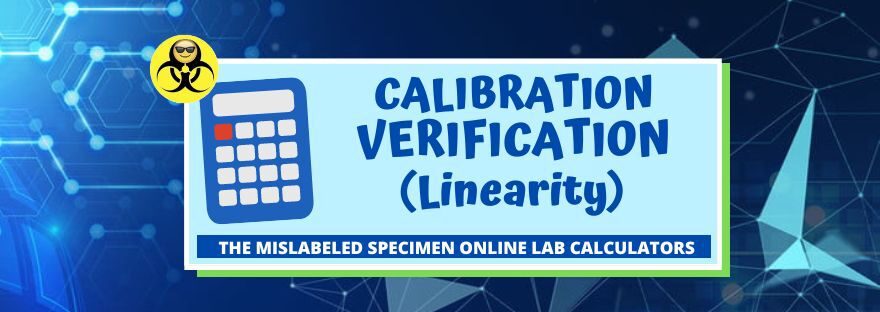Determine the accuracy of calibration throughout the reportable range using different dilutions of an analytical solution.
CLIA Recommendation: Must be done every 6 months for non-waived quantitative assays calibrated with less than three levels of calibrators.
Number of Levels:
Enter Values and Replicates below separated by a comma (e.g. 4,3,6):
Level 1:
Level 2:
Level 3:
Slope:
Y-intercept:
Coefficient of Determination(r2):
Interpretation:
Verified Range:
Definition of Terms:
Calibration verification is supposed to be a continuing performance check (at least every 6 months or whenever reagent lots are changed, major preventive maintenance is performed, or control problems persist after corrective actions) on the accuracy of calibration throughout the reportable range.
Formula:
n = Number of points or dilutions
x-axis = target values
y-axis = recovered values
sumxy = sum of the products of the target & recovered values of a certain dilution
sumx = sum of all target values
sumy = sum of all recovered values
sumx2 = sum of all the squares of target values
sumy2 = sum of all the squares of recovered values
slope = ((n * sumxy) – (sumx * sumy))/((n * sumx2) – (sumx 2))
intercept = sumy – (slope * sumx)/n
coefficient of determination = ((n * sumxy) – (sumx * sumy)) / (((n * sumx2) – sumx2 * ((n * sumy2) – sumy2)0.5
Passing Criteria:
- Slope should be between 0.85 and 1.15
- Square of the Coefficient of Determination should be equal or less than 0.95
Please check out our list of calculators for Laboratory Statistics:





[…] Calibration Verification and Linearity […]
[…] Calibration Verification and Linearity […]
[…] Calibration Verification and Linearity […]